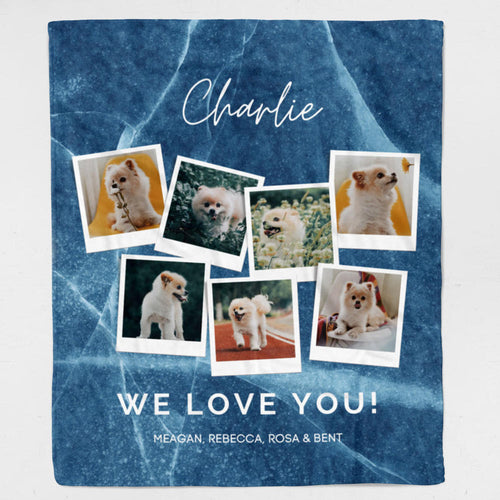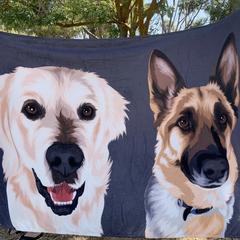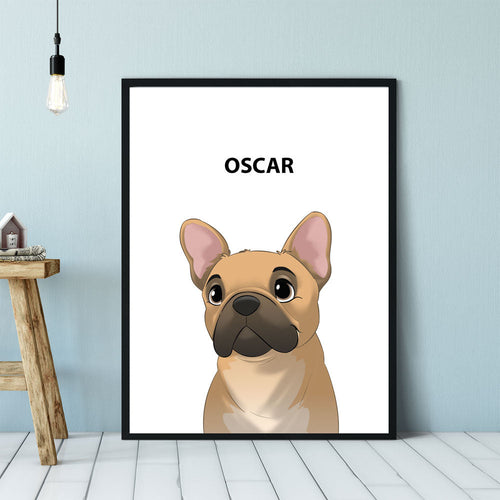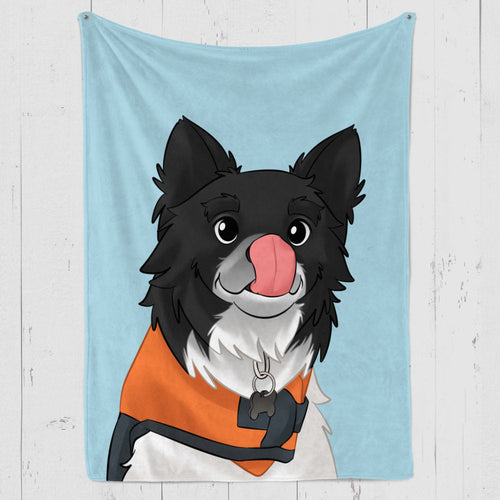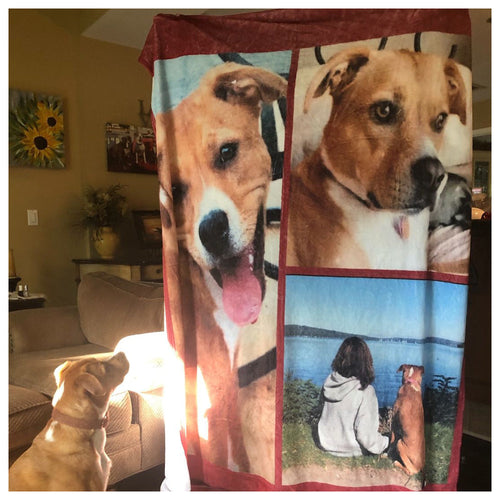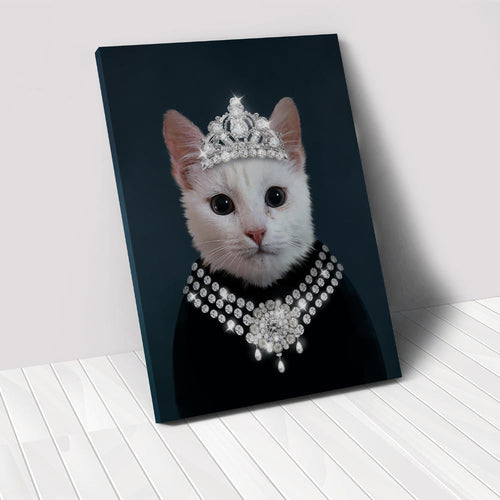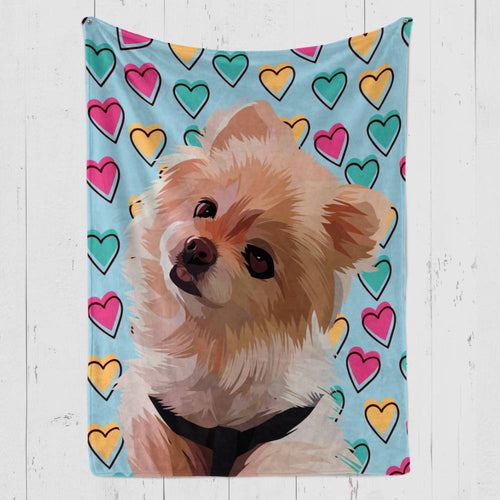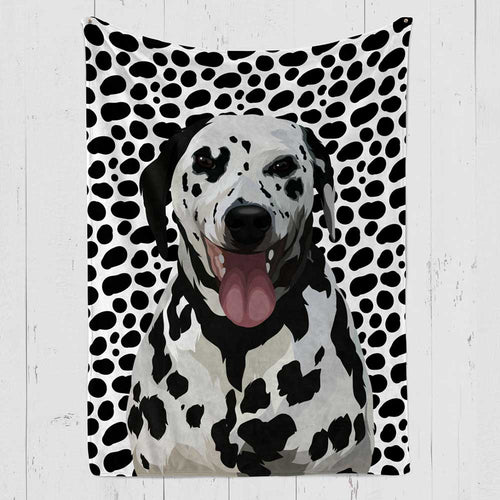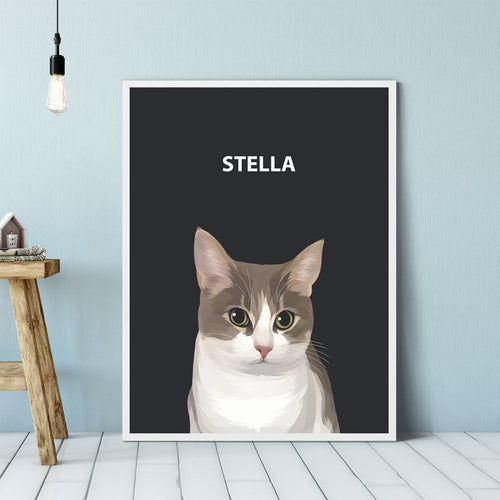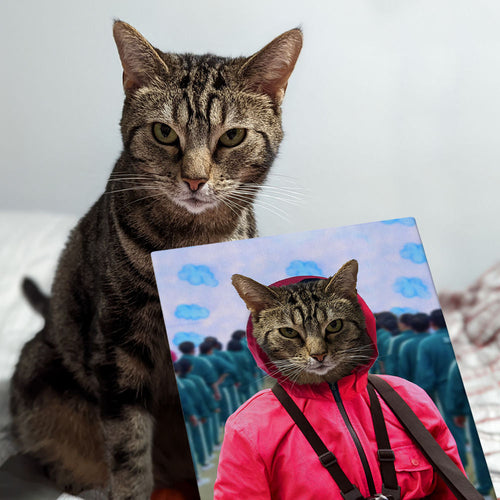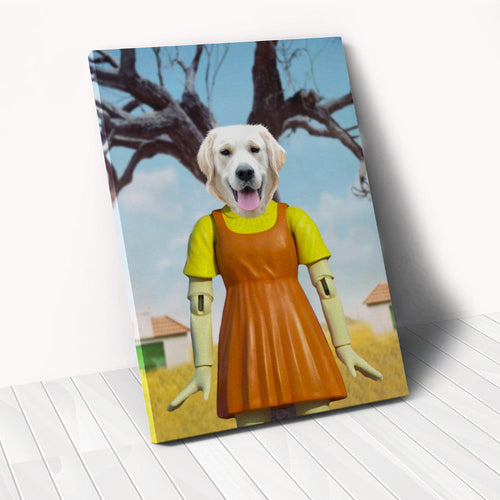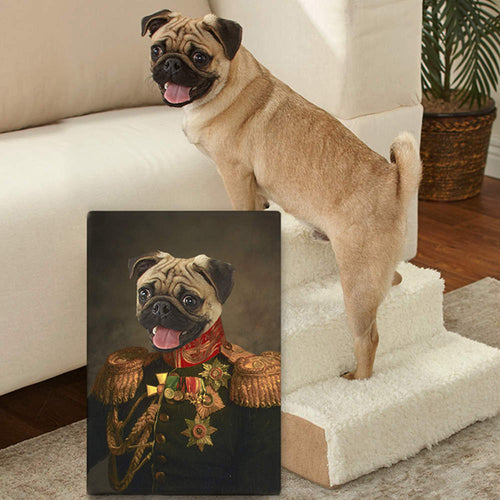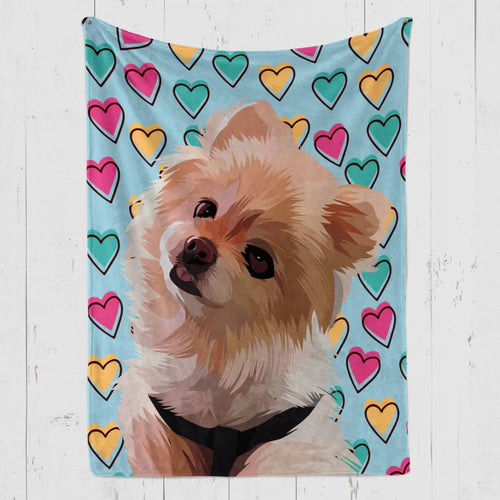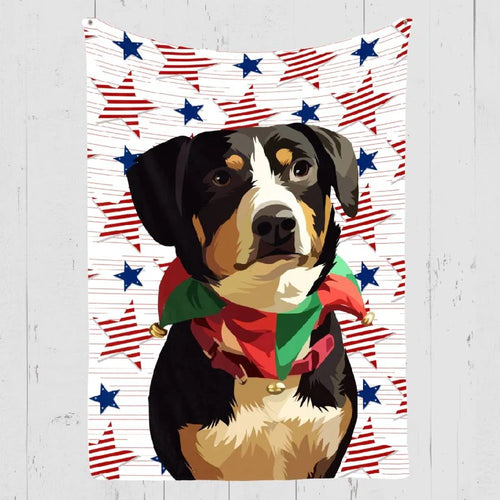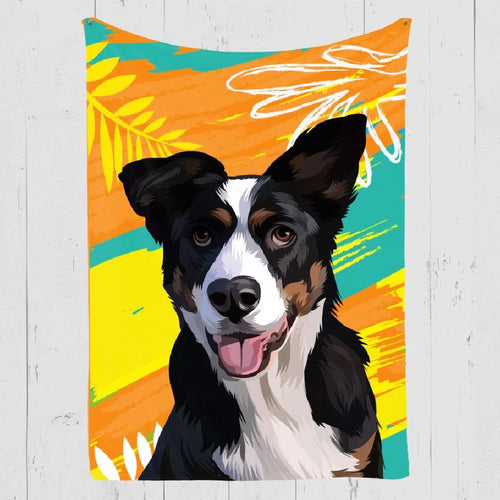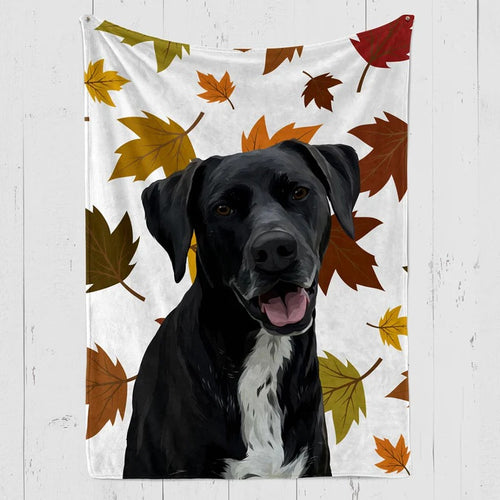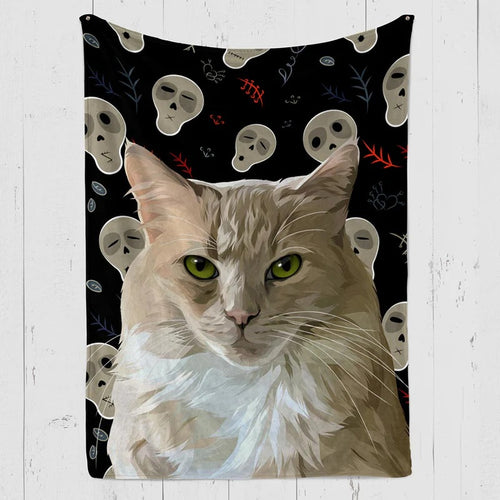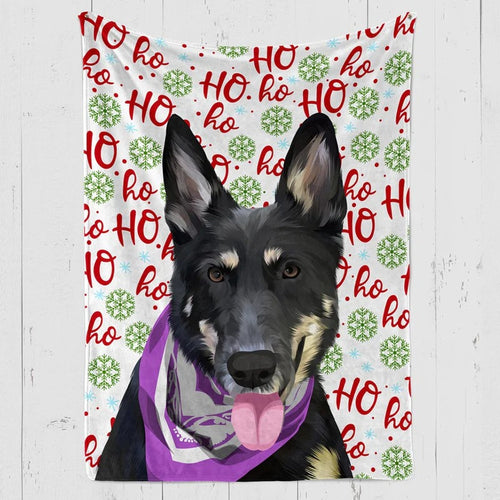
Known for their unusual friendliness and tenacious work ethic, Dutch dog breeds appeal to a variety of owners and breeders, whether helping out on farms or participating in hunts. Knowing a dog's genealogy and breeding history can be an exciting and engrossing endeavor, especially when considering the original intent of extraordinary canines. Many dog breeds originated in the Netherlands, and their appeal quickly crossed national borders.
Here are the top 10 Dutch dogs that you can consider if you are planning to get a canine companion.
What are the Top 10 Dog Breeds from the Netherlands?
1. Drentse Patrijshond

The Patrijshond, also known as the Dutch partridge dog excels as a pointer and retriever and is trainable due to their high intelligence. In the domestic situation, this Dutch dog breed takes a relaxed attitude, creates strong relationships with his family, and shows his loyalty.
- Group: Sporting Group
- Height: 22 to 25 inches
- Weight: 48 to 73 lbs
- Energy Level: Highly energetic
- Physical Characteristics: Medium-sized dog with a dense, thick coat that often hides his athletic build. Long furry ears frame his face, and a somewhat domed skull.
- Lifespan: 12 to 14 years
- Color: Orange and white, white and chocolate, tri-color
- Shedding: Twice a year
- Bark: Barks occasionally and only when needed
2. Bouvier des Flandres

This native of Flanders was bred as a herding dog for farm work and was commonly seen driving cattle, pulling carts, and herding sheep. Today, they continue to be used as police and security dogs and are also increasingly common as pets in the Netherlands.
- Group: Herding group
- Height: Up to 27 inches tall
- Weight: 93 lbs
- Energy Level: Active
- Physical Characteristics: A large, impressive dog with a deep undercoat and coarse, shaggy coat, which together offer good protection from the elements.
- Lifespan: 10 to 12 years
- Color: Black, brindle, salt and pepper, fawn, gray, black and gray
- Shedding: Average shedding
- Bark: Rarely barks
3. Frisian Water Dog or Wetterhoun

Wetterhouns have a surprisingly strong affinity for water. They are playful, funny, smart and cuddly. They were originally bred to hunt otters and like to splash around in ponds, rivers, and other bodies of water. Due to their sensitivity, Wetterhouns are not suitable for hard training, but they love praise and rewards from their owners.
- Group: Hunting Group
- Height: 21 to 23 inches
- Weight: 55 and 77 lbs
- Energy Level: High energy level
- Physical Characteristics: Apart from the head, ears and legs, which have a softer texture, the rest of their fur is thick and curly.
- Lifespan: 12 to 14 years
- Color: Black, roan, liver, liver and white, black and white
- Shedding: Moderate shedding
- Bark: Rarely barks
4. Dutch Shepherd

The Dutch Shepherd has undergone very little modification since the time they were originally bred. This adaptable and diligent Dutch dog excels at multitasking and can be trained for a variety of jobs.
- Group: Shepherd Group
- Height: 22 to 25 inches
- Weight: 50 and 70 lbs
- Energy Level: High energy level
- Physical Characteristics: This Dutch dog breed has a muscular, medium-sized, well-proportioned body type with a strong, well-balanced frame.
- Lifespan: 11 to 14 years
- Color: Brindle, salt and pepper, gold brindle, silver brindle, blue gray, gray brindle
- Shedding: High shedding throughout the year
- Bark: Barks a lot when it sees a stranger
5. Dutch Smoushond

One of the smallest Dutch dog breeds, the Smoushond, has pinschers and schnauzers and is often used as a rat-hunting dog. These dogs are classified as a "rare breed" by dog registries and often weigh less than 20 pounds.
- Group: Hunting Group
- Height: 14 to 17 inches
- Weight: 20 and 22 lbs
- Energy Level: Moderate energy level
- Physical Characteristics: Small dog with an equally long and tall square body. It has a short, broad head with a slightly rounded forehead, a broad, solid black nose, and a domed skull.
- Lifespan: 12 to 15 years
- Color: Any shade of yellow
- Shedding: Low shedding
- Bark: Barks a lot when someone comes near
6. Keeshond

The Keeshond is a classic example of a Dutch dog breed. They have fox-like faces, gently curved tails, and abundant beautiful fur; they are similar in appearance to a larger Pomeranian or a somewhat smaller Samoyed.
- Group: Non-sporting group
- Height: 17 to 18 inches
- Weight: 36 and 40 lbs
- Energy Level: High energy level
- Physical Characteristics: They have beautiful rich fur, fox faces and curved tails
- Lifespan: 13 to 15 years
- Color: Black, silver, gray, gray and black, black and silver, gray cream and black
- Shedding: Moderate shedding twice a year
- Bark: Barks a lot when it sees a stranger
7. Kooikerhondje

The "little cager dog" was originally intended to lure ducks out of cover and into the line of fire of waiting gunners and was also featured prominently in famous Rembrandt paintings. A member of the spaniel family, the Kooikerhondje is a fun-loving and friendly breed that is generally known to be well-behaved even without any training.
- Group: Utility Group
- Height: 14 to 17 inches
- Weight: 20 and 30 lbs
- Energy Level: Medium energy level
- Physical Characteristics: Their huge black-tipped ears and richly feathered tail, which they wag proudly, make them easy to spot.
- Lifespan: 12 to 14 years
- Color: Red and white
- Shedding: Moderate shedding
- Bark: Barks a lot
8. Markiesje

This historic dog breed, sometimes known as the "Dutch Tulip Hound", has been seen in paintings since the 17th century. They were originally bred as companion dogs, but today, they are extremely rare, only occasionally seen outside of specialized groups in the Netherlands.
- Group: Society Group
- Height: 13 to 15 inches
- Weight: 12 and 14 lbs
- Energy Level: Moderate energy level
- Physical Characteristics: A feathered tail that forms a smooth line with the back and a petite, well-built dog with a body that is a little bit longer than its tail.
- Lifespan: 12 to 14 years
- Color: Black, black with small spots of white
- Shedding: Moderate shedding
- Bark: Only barks when it sees a stranger
9. Saarloos Wolfdog

A German shepherd and a Eurasian gray wolf were crossed in 1935 by Dutch breeder Leendert Saarloos to create the Saarloos wolfdog. They are popular among hikers and wilderness enthusiasts because of their athletic build and innate, untamed qualities.
- Group: Wolfdog breed
- Height: 24 to 30 inches
- Weight: Up to 100 lbs
- Energy Level: Moderate to high energy level
- Physical Characteristics: They have long, strong forelimbs. Their eyes are golden and almond-shaped, and they have erect, "prickly" ears. They often hang their big, bushy tails between their legs.
- Lifespan: 10 to 12 years
- Color: Black, tan, silver, white, red, blue
- Shedding: Moderate shedding
- Bark: Rarely barks
10. Stabyhoun

The Stabyhoun comes from the Frisian forest region in the southeast of the Netherlands and is one of the five rarest dog breeds in the world. They are a very adaptable companion due to their sweet nature and great desire to please, and they like lots of play and exercise.
- Group: Sporting breed
- Height: 20 to 21 inches
- Weight: 45 to 55 lbs
- Energy Level: High energy level
- Physical Characteristics: The feathering on its chest, collar, forelegs, breeches, and tail gives the impression that it has long hair.
- Lifespan: 13 to 14 years
- Color: Roan, orange and white, black and white, white and chocolate
- Shedding: Moderate shedding twice a year
- Bark: Some bark excessively
Frequently Asked Questions:
What are the main features and characteristics of the Dutch Shepherd breed?
Spirited, agile, perceptive, and smart, the Dutch Shepherd breed exhibits the herding instinct that led to its original development. This Dutch dog breed has an independent nature and tends to be stubborn.
What behavioral effects does herding and herding history have on the Dutch Shepherd?
The Dutch shepherd breed shows the herding instinct has an independent nature and can sometimes be a bit stubborn.
Are Dutch Shepherds easy to train?
Dutch Shepherds are excellent listeners and have a strong desire to please their families. They are a very trainable breed, bright and eager to learn. Keep training sessions short to ensure your dog stays engaged and focused.
What is the history of the Keeshond breed, and where did it come from?
The Keeshond is a dog from the historic Spitz family. The Pomeranian and the American Eskimo are actually its closest relatives. Although the breed's true origins are uncertain, it was well established in Holland as a companion and guard dog by at least the 18th century.
What are the behavioral characteristics of a Keeshond?
Keeshond are people-lovers who eagerly participate in all family activities. They thrive in households where the owners demand this behavior from their dogs. They are intelligent, active, and alert, which has made them the most admired dog in Holland.
How to take care of a Keeshond’s coat?
Keeshond can have a very attractive coat if it is groomed frequently. The solution is to use a brush to brush the dog's fur and a spray bottle to wash it for about 30 minutes. Aim to wash and brush your Keeshond's coat every six to eight weeks and at least once a week.
What is the Kooikerhondje's function and background as a duck toll dog?
They originated in Holland and are considered to be the ancestors of the Nova Scotia Duck Tolling Retriever. They were used to lure ducks into traps for hunting or tagging. Despite their success in other dog sports, such as flyball, they are still used as hunting dogs.
What is the ideal lifestyle and environment for Kooikerhondjes?
Kooikerhondjes are in their best health in humid and mild temperatures. The best climate for this Dutch dog breed would be mild climatic conditions with excessive sunshine and moderate rainfall and snow in a year.
What is the energy level of a Kooikerhondje?
Although Nederlandse Kooikerhondjes are temperamental dogs rather than hyperactive dogs, they still benefit from routine physical and mental exercise.
What are Stabyhoun's hunting and fetching abilities for?
The Stabyhoun is considered a "versatile" dog due to its prowess in pointing, retrieving and hunting. Their size and affectionate nature make them excellent family dogs.
How are Stabyhouns with children and other animals?
The Stabyhoun has a very high level of tolerance towards animals and children. This breed can be trained to be obedient and devoted to its owner with consistent, gentle training. Stabyhouns should never be harsh or sudden.
What are some common Stabyhoun health problems?
Patent Ductus Arteriosus (PDA), elbow dysplasia, epilepsy, hip dysplasia, and Von Willebrand's disease type 1 (vWB) are known congenital health problems in the breed.
Takeaway
These are the top 10 dogs from the Netherlands and are amazingly friendly and active dogs. Although most Dutch dog breeds have a working and hunting history, many are also skilled as pets. So, if you are planning to get a furry companion who will play with your kid and keep his guard on, Dutch dogs can be the ideal choice.
Latest Review on Woof Blankets
To have such a masterpiece by my side every day is a gift for me and my memories with Rex. Thank you WoofBlankets for such an opportunity to recreate his image on a blanket.Lara o’ Miguel US, California
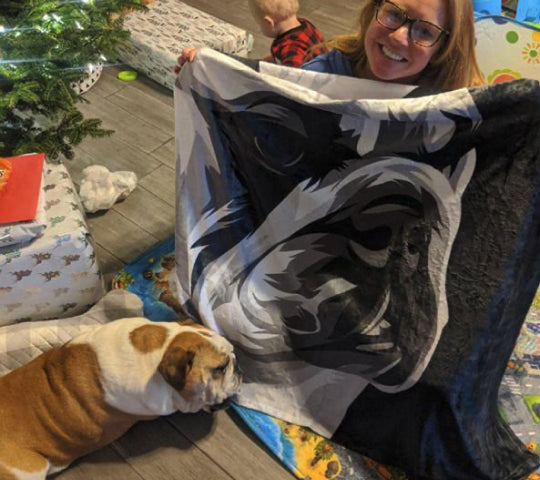
COLLECTION WORTH EVERY PENNY
BEST SELLERS
-
Woofy Single Color Custom Pet Blanket
![Woofy Single Custom Pet Blanket – Woof Blanket]()
- -41%
BlanketsSHOP NOW- Regular price
- from $64.95
- Sale price
- from $64.95
- Regular price
-
$109.95 - Unit price
- per
Sold out -
Exclusive Christmas Custom Pet Blanket
![Exclusive Custom Pet Blanket]()
- -39%
BlanketsSHOP NOW- Regular price
- from $69.95
- Sale price
- from $69.95
- Regular price
-
$114.95 - Unit price
- per
Sold out -
Christmas Custom Pet Blanket
![Christmas Custom Pet Blanket - Custom Dog Blankets]()
- -40%
BlanketsSHOP NOW- Regular price
- from $69.95
- Sale price
- from $69.95
- Regular price
-
$115.95 - Unit price
- per
Sold out -
Watercolor Pet Portraits
![]() SHOP NOW
SHOP NOW- Regular price
- from $59.95
- Sale price
- from $59.95
- Regular price
-
- Unit price
- per
Sold out -
Woofy Christmas Custom Dog Blanket
![Woofy Christmas Custom Dog Blanket]()
- -39%
BlanketsSHOP NOW- Regular price
- from $69.95
- Sale price
- from $69.95
- Regular price
-
$114.95 - Unit price
- per
Sold out -
Modern Pet Owner Portrait
![]()
- -32%
CanvasSHOP NOW- Regular price
- from $84.95
- Sale price
- from $84.95
- Regular price
-
$124.95 - Unit price
- per
Sold out -
Woof Splash Custom Pet Blanket
![Woof Splash Custom Pet Blanket]()
- -39%
BlanketsSHOP NOW- Regular price
- from $69.95
- Sale price
- from $69.95
- Regular price
-
$114.95 - Unit price
- per
Sold out -
The Admiral - Custom Pet Portrait
![The Admiral - Custom Pet Portrait Online]()
- NEW
- -25%
CanvasSHOP NOW- Regular price
- from $59.95
- Sale price
- from $59.95
- Regular price
-
$79.95 - Unit price
- per
Sold out -
Wings of Loyalty - Custom Pet Portrait
![]()
- NEW
CanvasSHOP NOW- Regular price
- from $59.95
- Sale price
- from $59.95
- Regular price
-
- Unit price
- per
Sold out -
Pet Memorial Custom Photo Collage Blanket
![Personalized pet memorial quilt with photos]()
- -41%
BlanketsSHOP NOW- Regular price
- from $64.95
- Sale price
- from $64.95
- Regular price
-
$109.95 - Unit price
- per
Sold out -
Celestial Paws - Custom Pet Portrait
![]() CanvasSHOP NOW
CanvasSHOP NOW- Regular price
- from $59.95
- Sale price
- from $59.95
- Regular price
-
- Unit price
- per
Sold out -
The Loyal Soul - Custom Pet Portrait
![]()
- NEW
SHOP NOW- Regular price
- from $59.95
- Sale price
- from $59.95
- Regular price
-
- Unit price
- per
Sold out -
Cartoonized Pet Portraits (New)
![Cartoonized Pet Custom Portraits Online]()
- -36%
SHOP NOW- Regular price
- from $59.95
- Sale price
- from $59.95
- Regular price
-
$93.95 - Unit price
- per
Sold out -
The French Sailor - Custom Pet Portrait
![]()
- -25%
CanvasSHOP NOW- Regular price
- from $59.95
- Sale price
- from $59.95
- Regular price
-
$79.95 - Unit price
- per
Sold out -
The Policeman - Custom Pet Portrait
![]()
- NEW
- -25%
CanvasSHOP NOW- Regular price
- from $59.95
- Sale price
- from $59.95
- Regular price
-
$79.95 - Unit price
- per
Sold out -
The General - Custom Pet Portrait
![]()
- NEW
- -25%
CanvasSHOP NOW- Regular price
- from $59.95
- Sale price
- from $59.95
- Regular price
-
$79.95 - Unit price
- per
Sold out -
Woof Love Custom Pet Blanket
![Woof Love Custom Pet Blanket]()
- -39%
BlanketsSHOP NOW- Regular price
- from $69.95
- Sale price
- from $69.95
- Regular price
-
$114.95 - Unit price
- per
Sold out -
Summer Time Custom Pet Blanket
![Summer Time Custom Pet Blanket]()
- -39%
BlanketsSHOP NOW- Regular price
- from $69.95
- Sale price
- from $69.95
- Regular price
-
$114.95 - Unit price
- per
Sold out -
The Ambassador - Custom Pet Portrait
![The Ambassador - Custom Pet Portrait Online]()
- NEW
- -25%
CanvasSHOP NOW- Regular price
- from $59.95
- Sale price
- from $59.95
- Regular price
-
$79.95 - Unit price
- per
Sold out -
Fall In Love Custom Pet Blanket
![Fall In Love Custom Dog Blanket]()
- NEW
- -39%
BlanketsSHOP NOW- Regular price
- from $69.95
- Sale price
- from $69.95
- Regular price
-
$114.95 - Unit price
- per
Sold out -
The Classy Lady - Custom Pet Portrait
![The Classy Lady]()
- NEW
- -25%
CanvasSHOP NOW- Regular price
- from $59.95
- Sale price
- from $59.95
- Regular price
-
$79.95 - Unit price
- per
Sold out -
The Duke - Custom Pet Portrait
![The Duke - Custom Pet Portrait]()
- NEW
- -25%
CanvasSHOP NOW- Regular price
- from $59.95
- Sale price
- from $59.95
- Regular price
-
$79.95 - Unit price
- per
Sold out -
Dog In Suit- Custom Pet Portrait
![Dash Dog In Suit- Custom Pet Portrait Online]()
- NEW
- -25%
CanvasSHOP NOW- Regular price
- from $59.95
- Sale price
- from $59.95
- Regular price
-
$79.95 - Unit price
- per
Sold out -
The Princess - Custom Pet Portrait
![]()
- NEW
- -25%
CanvasSHOP NOW- Regular price
- from $59.95
- Sale price
- from $59.95
- Regular price
-
$79.95 - Unit price
- per
Sold out -
Modern Pet Portrait with One Mug
![Modern Pet Portrait with One Mug]()
- -25%
Print MaterialSHOP NOW- Regular price
- from $99.95
- Sale price
- from $99.95
- Regular price
-
$133.95 - Unit price
- per
Sold out -
The Aristocrat - Custom Pet Portrait
![The Aristocrat - Custom Pet Portrait At Best Price]()
- NEW
- -25%
CanvasSHOP NOW- Regular price
- from $59.95
- Sale price
- from $59.95
- Regular price
-
$79.95 - Unit price
- per
Sold out -
Single Color Custom Blanket with 1 Mug
![Single Color Custom Blanket with 1 Mug]() BlanketsSHOP NOW
BlanketsSHOP NOW- Regular price
- from $99.95
- Sale price
- from $99.95
- Regular price
-
- Unit price
- per
Sold out -
Single Color Custom Blanket with 2 Pillows
![Single Color Custom Pet Blanket with 2 Pillows]()
- -21%
BlanketsSHOP NOW- Regular price
- from $99.95
- Sale price
- from $99.95
- Regular price
-
$125.95 - Unit price
- per
Sold out -
The Dog in Suit Custom Pet Mug
![]()
- -20%
MugsSHOP NOW- Regular price
- $39.95
- Sale price
- $39.95
- Regular price
-
$49.95 - Unit price
- per
Sold out -
Angel Custom Pet Mug
![]()
- -20%
MugsSHOP NOW- Regular price
- $39.95
- Sale price
- $39.95
- Regular price
-
$49.95 - Unit price
- per
Sold out -
This Human Belongs To - Custom Pet Mug
![]()
- NEW
- -20%
MugsSHOP NOW- Regular price
- $39.95
- Sale price
- $39.95
- Regular price
-
$49.95 - Unit price
- per
Sold out -
It's Not Dog Hair Custom Pet Mug
![]()
- NEW
- -20%
MugsSHOP NOW- Regular price
- $39.95
- Sale price
- $39.95
- Regular price
-
$49.95 - Unit price
- per
Sold out -
My Dog Is My Valentine Custom Pet Mug
![]()
- NEW
- -20%
MugsSHOP NOW- Regular price
- $39.95
- Sale price
- $39.95
- Regular price
-
$49.95 - Unit price
- per
Sold out -
3 Photos With Message Custom Pet Mug
![]()
- NEW
- -20%
MugsSHOP NOW- Regular price
- $39.95
- Sale price
- $39.95
- Regular price
-
$49.95 - Unit price
- per
Sold out -
My Valentine Has Four Legs- Personalized Mugs
![]()
- NEW
- -20%
MugsSHOP NOW- Regular price
- $39.95
- Sale price
- $39.95
- Regular price
-
$49.95 - Unit price
- per
Sold out -
Dog Mamma Custom Pet Coffee Mug
![]()
- -20%
MugsSHOP NOW- Regular price
- $39.95
- Sale price
- $39.95
- Regular price
-
$49.95 - Unit price
- per
Sold out -
Uncle Sam - Custom Pet Portrait
![]()
- NEW
- -25%
CanvasSHOP NOW- Regular price
- from $59.95
- Sale price
- from $59.95
- Regular price
-
$79.95 - Unit price
- per
Sold out -
The Revolutionary Emperor - Custom Pet Portrait
![]()
- NEW
- -25%
CanvasSHOP NOW- Regular price
- from $59.95
- Sale price
- from $59.95
- Regular price
-
$79.95 - Unit price
- per
Sold out -
The Princess Paws - Custom Pet Portrait
![]()
- -25%
CanvasSHOP NOW- Regular price
- from $59.95
- Sale price
- from $59.95
- Regular price
-
$79.95 - Unit price
- per
Sold out -
The Dark Crusader Knight - Custom Pet Portrait
![]()
- -25%
CanvasSHOP NOW- Regular price
- from $59.95
- Sale price
- from $59.95
- Regular price
-
$79.95 - Unit price
- per
Sold out
